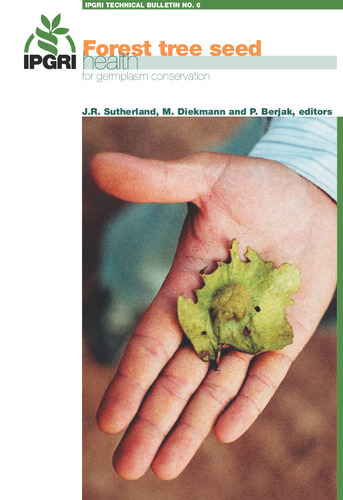Forest tree seed health for germplasm conservation
The conservation and use of forest genetic resources worldwide poses several challenges to scientists, policy-makers and, in particular, to local stakeholders interested in long-term strategies to manage these biological resources in a sustainable manner. The vast diversity of tree species, many of which are still unknown, the high level of threats and the increased demand for forest products require prioritization of actions, clear indications for research and development, and strategies to mitigate the current trends in the depletion of forest resources. The strategy of conservation 'through-use' of forest genetic resources is a very important alternative to an in situ approach and, as such, is to be promoted and developed. However, basic knowledge and understanding of species' reproductive biology, seed production, seed quality and health aspects, limit the use of a larger number of species in important activities such as restoration, rehabilitation, agroforestry and on-farm conservation practices. Increasingly, the use of forest genetic diversity in research and breeding requires a greater movement of germplasm. This technical bulletin, prepared by Drs J. R. Sutherland, M. Diekmann and P. Berjak, all well-known scientists in their respective areas of specialization, aims to breach some of the knowledge gaps in forest seed biology and technology and, more importantly, to contribute to future research on priority forest seed health aspects. In addition, this it aims to increase awareness amongst technical staff involved in conservation and use activities. To this end it presents state-of-the-art tools for the identification of the most important tree seed pathogens and provides clear and ready-touse molecular-based tools for the screening of fungi and virus in seeds.

